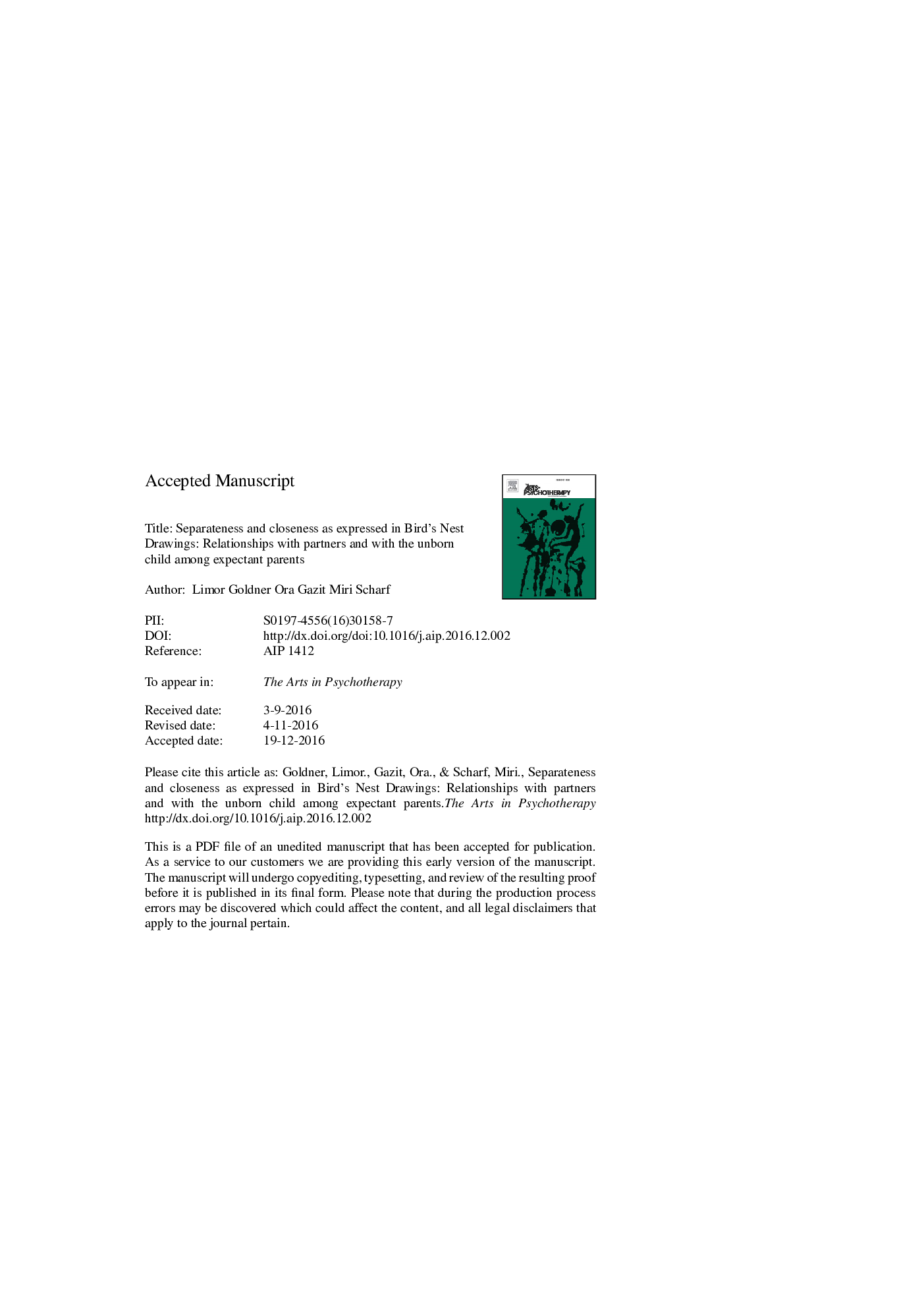| Article ID | Journal | Published Year | Pages | File Type |
|---|---|---|---|---|
| 4935639 | The Arts in Psychotherapy | 2017 | 49 Pages |
Abstract
The Bird's Nest Drawing (BND) (Kaiser, 1996) is an art-based technique originally developed to assess attachment security. In an attempt to expand the use of the BND technique among adults, the study explored the use of the BND in assessing parental caregiving representations. Specifically, the current study examined the associations between qualities of the BND and separateness and closeness in the relationships with the unborn child, and in the couple relationship, of 38 Israeli expectant-parent couples. In addition, narratives regarding the drawings were analyzed. The findings point to associations between positive caregiving representations characterized by sense of vitality and optimism, and expectant fathers' separateness from the unborn child. Expectant mothers' rejection toward the fetus was associated with negative caregiving representations in drawings. Similarly, closeness toward the fetus was associated with lower levels of pathology in men's drawings. Differentiation within the couple relations was associated with higher levels of vitality and optimism and lower levels of pathology in women's drawings. Narrative of vital and optimistic BNDs included themes of adequate caregiving and competency, and a balance between protection and separateness toward the baby bird. The descriptions were positive and rich. In contrast, narratives of BNDs that scored high on pathology were restricted or negative in their nature, containing themes of abandonment and threat. The theoretical and clinical implications for intervention are discussed.
Keywords
Related Topics
Health Sciences
Medicine and Dentistry
Psychiatry and Mental Health
Authors
Limor Goldner, Ora Gazit, Miri Scharf,
